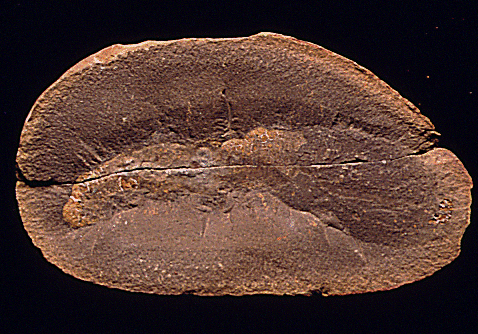A casual passerby might not realize that a holothurian, or sea cucumber, is an echinoderm. Holothurians are generally long and wormlike; they don't look much like starfish or sea lilies. However, holothurians retain pentameral (five-rayed) symmetry, with five rows of tube feet running from the mouth along the body (three are visible in the picture at the left; the other two are on the other side of the body). Holothurians retain the skeleton of echinoderms, but in most species the skeletal plates are reduced to microscopic spicules, often shaped like wheels, bars, or anchors, as seen in the electron microscope photograph on the right. One way to think of a holothurian is as a sea urchin that is lying on its side, stretched out, and missing much of its skeleton!
Holothurians are common in the oceans of today; in fact, in certain parts of the deep sea, the ocean floor swarms with vast herds of holothurians. Holothurians are also common in shallow-water habitats such as tidepools.
The spicules of holothurians are found as fossils, but they have not received much study compared to other types of microfossils. Body fossils of whole holothurians are rare. One is pictured below; this is Achistrum, from the Pennsylvanian deposits of Mazon Creek, Illinois.



